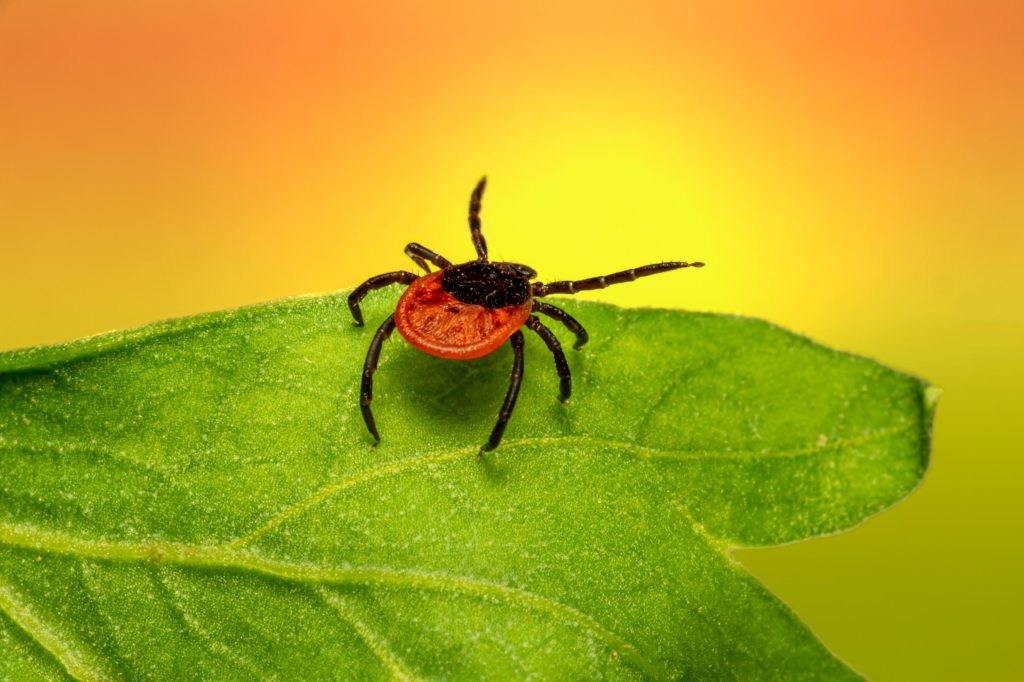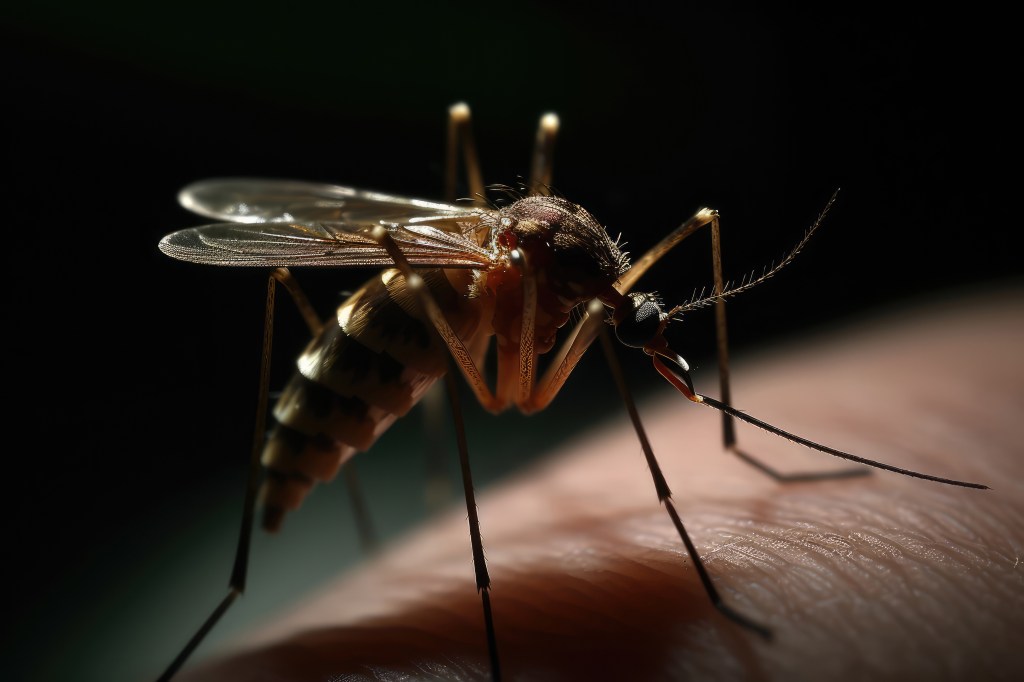What do you really know about the health risks of pet parasites such as fleas on dogs?
Many people believe ticks, fleas and other external parasites are nothing more than a nuisance to our pets. Sure, they’re unsightly pests and they irritate our cats and dogs, but that’s all, right?
Well, actually these unwelcome guests can cause a range of serious problems to our beloved companions. When they bite our pets, parasites can transmit a number of diseases, some of which can be fatal.
To keep our pets safe, we need to stop parasites before they get a chance to pass diseases.
The most important external parasites
Many different external parasites can affect our pets, but we should especially bear in mind ticks and bloodsucking insects (also known as “vectors”) that transmit dangerous diseases.
As a recent scientific paper puts it:
”Vector-borne diseases constitute a diversified group of illnesses, which are caused by a multitude of pathogens transmitted by arthropod vectors, such as mosquitoes, fleas, ticks, and sandflies. Proper management of these diseases is important from both human and veterinary medicine standpoints, given that many of these pathogens are transmissible to humans and dogs, which often live in close contact.1”
So, let’s look at each of these parasites in turn.
Ticks
Ticks are tiny, bloodsucking arachnids that are most often found in grassy, wooded areas; however they can also be found in urban parks. They target our pets by climbing onto plants and tall grass and latching onto the animal as they brush past.
Ticks can transmit a number of serious diseases including babesiosis, which causes anaemia and potentially death in pets; anaplasmosis, which can lead to acute fever; and several rickettsial diseases, which are dangerous to both pets and people.
It is sadly common to find ticks on dogs and cats – and, due to rising temperatures, these bloodsucking arachnids are more active than ever. As the weather warms, ticks are able to stay active beyond their traditional ‘season’ in summer and autumn and penetrate regions that would have previously been too cold.
In fact, ticks are now a year-round problem in many countries. To avoid them, and to keep our pets and our families protected from the diseases ticks carry, we need to adopt year-round protection.

Fleas
Fleas are wingless and blood-sucking insects whose presence is particularly common among dogs, cats and small mammal pets.
Fleas can jump many times their own height, allowing them to cling onto our pets’ coats and hitch a ride indoors. This makes them a year-round problem; even though they need warm temperatures to survive, the heat of the home allows them to reproduce and remain active. Ninety five percent of a flea’s lifecycle takes place in the home, rather than on the pet, so, for every flea that lives on your four-legged friend there are many more waiting to take its place. This is why your pet needs continuous flea protection.
Fleas can cause flea allergy dermatitis, an allergic reaction to flea saliva that can be very distressing for dogs and cats; due to the intense itch, pets can lose their fur and even wound their skin. Fleas can also transmit bartonellosis, also known as Cat Scratch Disease. The Big Flea Project, carried out in the UK in 2018, found that 11% of fleas were carrying the bacteria that causes bartonellosis2. People can get the disease when handling flea-infested animals, from flea dirt or from bites and scratches, which puts pet owners at a greater risk3.
Mosquitos
Mosquitos are a nuisance found all over the world, particularly around warm, damp environments like lakes and marshes. Although they can rarely fly more than 50 miles, they can travel huge distances as ‘stowaways’ in human cargo.
Like ticks, mosquitos are benefiting from rising temperatures. The warmer, more humid weather is enabling them to increase their activity across Europe and penetrate into countries that would have previously been cold. Various tropical species, notably the Asian Tiger Mosquito, are now commonplace in several European countries.
Mosquitos are infamous for transmitting malaria to humans, but they can also transmit several diseases to cats and dogs including heartworm, a tiny worm which can clog our pets’ organs and is unfortunately often fatal.
Sandflies
Sandflies are tiny, winged insects, similar to a mosquito. They are well distributed in southern Europe and are now being discovered further north as temperatures are increasing: they have even been reported in northern parts of France and Germany4,5.
Sandflies are typically most active just at sunset and can pose serious problems if they feed on us and our pets. Indeed, they can transmit leishmaniosis, a serious condition that can affect both dogs and humans.

Stay informed to stay safe
As we’ve seen, the threat from parasites is increasing around Europe, particularly in response to environmental changes.
As a first step to protecting your pet, we recommend you speak to your veterinarian about tailored parasite control for you and your family’s health. There is no substitute for the informed guidance your veterinarian can provide, tailored to your pet’s breed, age, personality, lifestyle and local region.
We also recommend you take a look at this quick video, outlining the risks that parasites can pose.
In addition, there are a number of specific steps that can keep your cat and dog safe:
- Get a proper treatment for ticks. Protect cats and dogs from parasites before they get a chance to spread disease; in more and more locations, that means year round protection. Ask your vet for the option that’s best for you and your pet.
- Check your indoor spaces. Flea eggs, larvae and pupae can be in the nooks and crannies of your house, so be sure to vacuum under the carpets, in the cracks of your upholstery and regularly wash your pet’s bedding.
- Brush your pet regularly. Continuous protection against fleas is the best option but, if in doubt, a quick brush can uncover fleas – make sure you use a special flea comb when you do it and look for small black specks known as flea dirt. If you do find fleas, remember that it takes 12 weeks of continuous treatment to get rid of a flea infestation.
- Keep your outdoor spaces clean. Ticks and mosquitos can set up camp in the areas around your house, so make sure you keep them tidy – and throw any old detritus away.
And remember: if your cat or dog is infested with ticks, or has an issue with any other parasite, don’t panic. Visit your vet and they’ll give you the advice you need.
For more information on the risks our dogs face due to rising temperatures, and what you can do keep them safe, please download our science-led pet health guide.
Your veterinarian plays a big role in your pet’s health. Input your location information and get a list of veterinarians near you.
Find A Vet Near Me1. Dantas-Torres, F., & Otranto, D. (2016). Best practices for preventing vector-borne diseases in dogs and humans. Trends in Parasitology, 32 (1), 43-55. https://doi.org/10.1016/j.pt.2015.09.004
2. Abdullah, S., Helps, C., Tasker, S., Newbury, H., & Wall, R. (2019). Pathogens in fleas collected from cats and dogs: distribution and prevalence in the UK. Parasites & Vectors, 12 (1), 1-10.
3. Breitschwerdt, E. B., Maggi, R. G., Chomel, B. B., & Lappin, M. R. (2010). Bartonellosis: an emerging infectious disease of zoonotic importance to animals and human beings. Journal of Veterinary Emergency and Critical Care (San Antonio, Tex. : 2001), 20 (1), 8–30. https://doi.org/10.1111/j.1476-4431.2009.00496.x
4. Aspöck, H., Gerersdorfer, T., Formayer, H., & Walochnik, J. (2008). Sandflies and sandfly-borne infections of humans in Central Europe in the light of climate change. Wiener klinische Wochenschrift, 120 (4), 24-29. https://doi.org/10.1007/s00508-008-1072-8
5. European Centre for Disease Prevention and Control and European Food Safety Authority. (2021). Phlebotomine sandflies maps. ECDC. https://ecdc.europa.eu/en/disease-vectors/surveillance-and-disease-data/phlebotomine-maps






 Austria
Austria  Belgium
Belgium  Czech Republic
Czech Republic  Denmark
Denmark  Europe
Europe  Finland
Finland  France
France  Germany
Germany  Greece
Greece  Hungary
Hungary  Ireland
Ireland  Israel
Israel  Italy
Italy  Netherlands
Netherlands  Norway
Norway  Poland
Poland  Portugal
Portugal  Romania
Romania  Spain
Spain  Sweden
Sweden  Turkey
Turkey  United Kingdom
United Kingdom